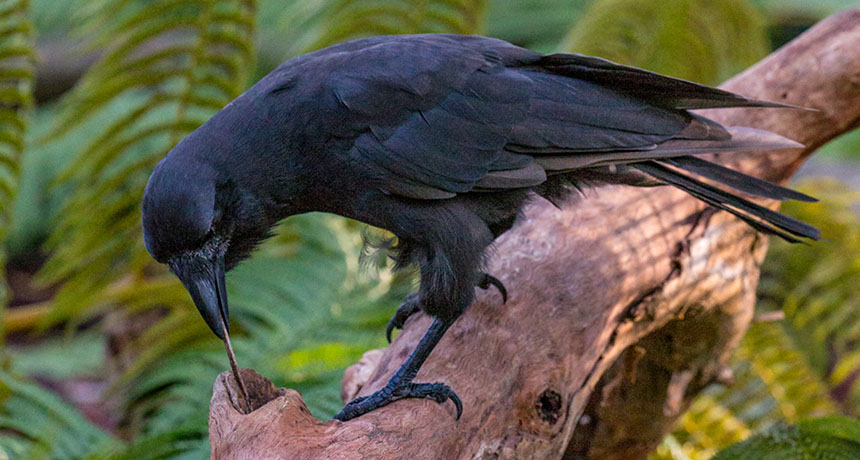Hawaiian crows ace tool-user test

A second kind of crow, native to Hawaii, joins the famous New Caledonian crows as proven natural tool-users.
Tested in big aviaries, Hawaiian crows (Corvus hawaiiensis) frequently picked up a little stick and deftly worked it around to nudge out hard-to-reach tidbits of meat that researchers had pushed into holes in a log, scientists report September 14 in Nature.
“A goosebump moment,” says study coauthor Christian Rutz of his first sight of Hawaiian crows tackling the test. Their nimble handling is “not some little fluke where a bird picks up a stick and pokes it in a hole,” he says. Anecdotes of such flukes abound, especially for crows. What’s rare are demonstrations that most able-bodied adults in a species show a capacity for tool use in chores important for life in the wild. Because Hawaiian crows are extinct in the wild, Rutz and his colleagues had the bittersweet ability to test literally all adult members of the species. Youngsters too developed tool skills on their own.
Rutz, of the University of St. Andrews in Scotland, has worked with New Caledonian crows, which routinely shape and wield food-snagging tools. These birds, like the Hawaiian crows, are native to remote tropical islands. So is the Galapagos woodpecker finch, one of the handful of other bird species proven expert in tool use. Remote islands may favor the evolution of such capacities, Rutz muses. There are no true woodpeckers to compete with birds for treats in crevices there. And few predators lurk to pounce on a bird distracted with its head practically in a hole.
GOOD STICKWORK A Hawaiian crow manipulates a twig in its beak to wiggle out a meaty tidbit hidden in a log. Crows dissatisfied with sticks that researchers set out for snagging food sometimes flew into the shrubbery and selected their own tools for the task.